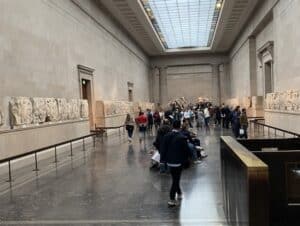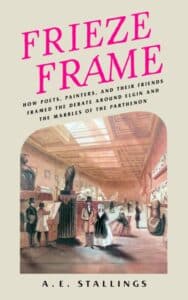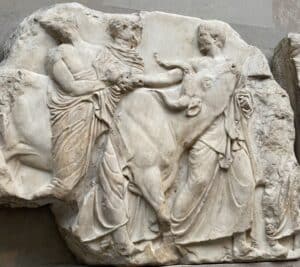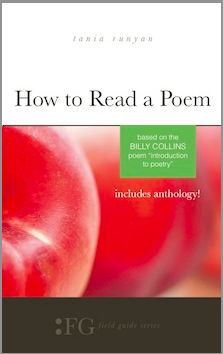A.E. Stallings reminds us that poets and artists have framed the Parthenon Marbles debate
My wife thought I was being a bit excessive. On a trip to England in 2024, I insisted that we see the Parthenon Marbles, aka the Elgin Marbles, at the British Museum. We had seen them several times before. But in 2023, the room housing them was inexplicably closed (no explanation given, just “closed”), as debate over their future was intensifying.
The Greeks want the marbles back; British traditionalists want them to stay. British law requires the marbles (and other foreign artifacts) to remain in Britain, although exceptions can be made.

The Parthenon Marbles
In 2024, the exhibition room was open. It’s a large room, a fitting space for these marvelous sculptures. We spent a good hour there, walking among the marbles, reading the information cards, and wondering what they must have looked like on the Parthenon itself as a frieze, and as a painted frieze. We may admire the artistry of the marble-white sculptures, but the ancient Greeks like theirs painted and colorful.
American poet A.E. Stallings undertook a project during the COVID lockdown. She began to research the Parthenon Marbles and the role that poets and artists have had in framing the debate about ownership and possession. That research became Frieze Frame: How Poets, Painters, and Their Friends Framed the Debate Around Elgin and the Marbles of the Parthenon. (I rather like how her title finesses the differing approaches to the sculptures’ name — and thus ownership.)
Stallings walks the reader through the history of the marbles — their creation and placement; what they looked like in ancient Greece; and the damage done to them over the centuries, particularly at the hands of the Venetians and then when the Ottoman Turks stored munitions in the Parthenon. It’s something of a miracle that so many of the marbles survived.

Elgin didn’t originally intend to remove the marbles from Athens. He received permission to make plaster casts and drawings and employed a team at his own expense to do that. At some point, and it’s not clear exactly when or how, permission was given to remove many of what had been the sculptures on the Parthenon’s frieze and several other sculptures nearby. Or maybe it wasn’t. Stallings explains in detail the conflicting documents of permission that exist in the British Museum’s archives (only one, and in Italian) and those of the Ottoman Empire (none).
Whatever officially transpired, remove them to London Lord Elgin did, igniting a controversy that continues to this very day. And the controversy existed from the beginning of the marbles’ removal, framed by two poets. John Keats was enraptured by the marbles when he viewed them in 1817. (One sculpture is said to have inspired “Ode on a Gracian Urn”; see photo.) Lord Byron, who would die in the fight for Greece’s independence from the Ottoman Empire, was outraged that the marbles had been removed; he wrote his own poem, “The Curse of Minerva.”

The scene said to have inspired Keats
The battle lines have remained drawn ever since. After Keats and Byron, both poets and artists weighed in. And they’re still weighing in. Stallings spent considerable time and research examining the debate, and she extensively documents the controversy that’s more than 200 years old. It’s a fascinating account of how cultural arguments can influence political and government actions. The arguments have oddly and stubbornly remained the same.
As an American, Stallings can be said to be in something of a knowledgeable if not entirely disinterested position. She studied Classics at the University of Georgia, Oxford, and Athens. In addition to four collections of poetry, she’s also published three verse translations, including The Nature of Things by Lucretius and Works and Days by Hesiod. And she lives with her family in Athens; her husband is an independent journalist, John Psaropolous., who posts at Hellenica on Substack.
In Frieze Frame, Stallings tells an informative story of politics, history, archaeology, art, diplomacy, and poetry. Calling upon Keats and Byron, and their successors in poetry and art, to explain and frame the debate about the Parthenon Marbles is an imaginative and creative way to describe the controversy.

A.E. Stallings
And the dispute goes on. In May, George Osborne, the chairman of the British Museum (and a former Minister for the Exchequer), announced negotiations were underway by which the museum would continue to own the marbles but that they would be “permanently loaned” to Greece. This supposedly will sidestep British law about historic artifacts.
I suspect the plan will satisfy neither side. And I wonder whether the Parthenon Marbles will still be in their exhibition hall the next time I visit London.
Photo by Getty Images, used under Unsplash+ license. Post by Glynn Young.
How to Read a Poem uses images like the mouse, the hive, the switch (from the Billy Collins poem)—to guide readers into new ways of understanding poems. Anthology included.
“I require all our incoming poetry students—in the MFA I direct—to buy and read this book.”
—Jeanetta Calhoun Mish
- Poet Sidney Lanier and the Lost Cause - October 2, 2025
- Poets and Poems: A.J. Thibault and “We Lack a Word” - September 30, 2025
- Poets and Poems: Catherine Strisik and “Goat, Goddess, Moon” - September 25, 2025


Leave a Reply